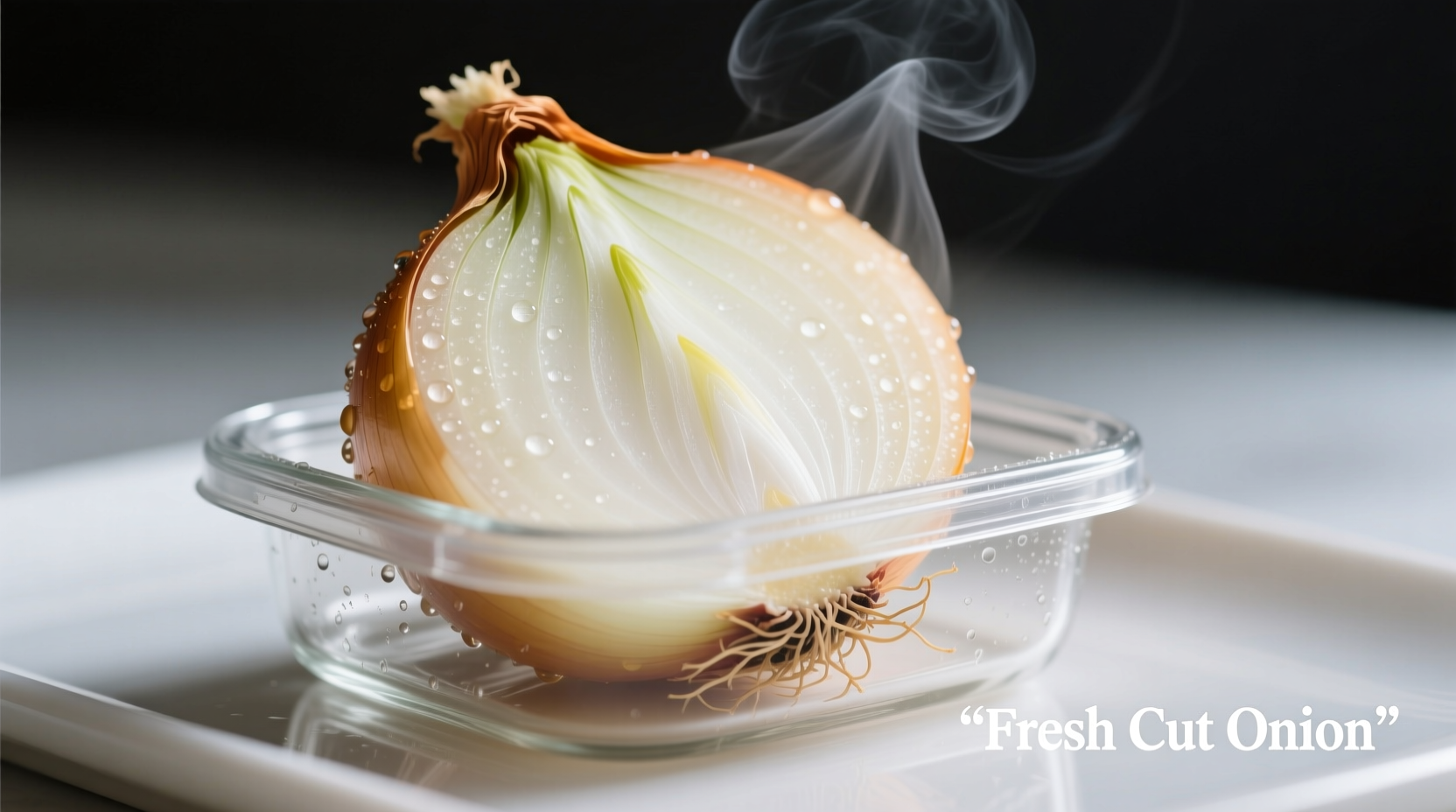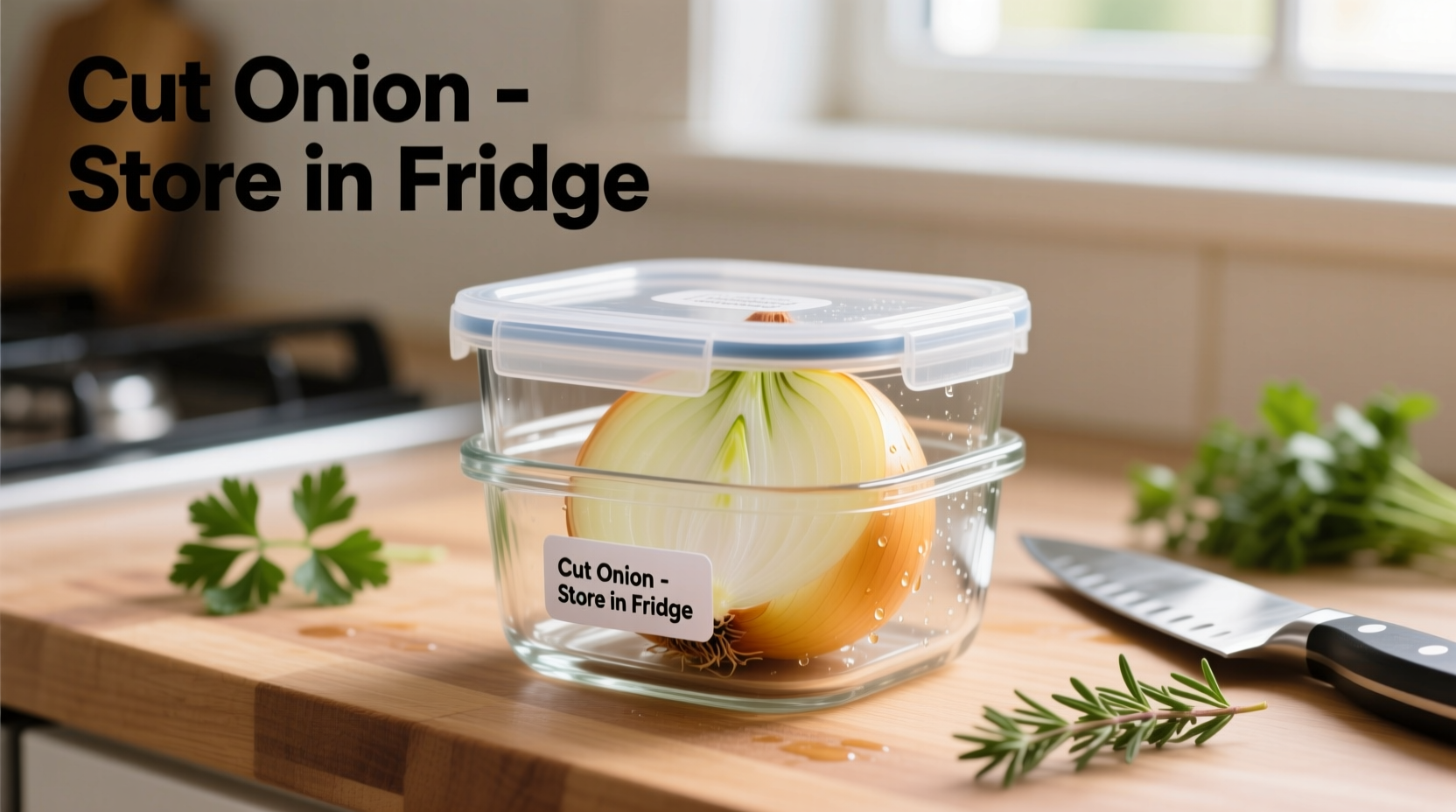The best way to store cut onion is in an airtight container in the refrigerator, where it will stay fresh for 7-10 days. Key factors for successful storage include minimizing air exposure, controlling moisture, and maintaining consistent refrigeration at or below 40°F (4°C).
Nothing ruins meal prep efficiency like discovering your prepped ingredients have spoiled. When you've taken the time to chop onions for recipes, proper storage becomes essential for both food safety and flavor preservation. This guide delivers science-backed methods that professional chefs and food scientists use to maximize the shelf life of cut onions while maintaining their culinary quality.
Why Proper Onion Storage Matters More Than You Think
Onions rank among the top 10 most wasted vegetables in American households according to USDA food waste statistics. Improper storage doesn't just lead to financial loss—it creates potential food safety risks. When cut, onions release enzymes that accelerate spoilage and create ideal conditions for bacterial growth.
| Storage Method | Shelf Life | Quality Preservation | Food Safety Risk |
|---|---|---|---|
| Room temperature, uncovered | 2-4 hours | Poor (rapid moisture loss) | High (bacterial growth) |
| Refrigerator, uncovered | 1-2 days | Fair (drying out) | Moderate |
| Refrigerator, airtight container | 7-10 days | Excellent | Low |
| Freezer, properly packaged | 6-8 months | Good (texture changes) | Very low |
Immediate Storage Solutions (0-2 Hours)
When you've cut onions but won't use them immediately, follow these steps to prevent rapid deterioration:
- Moisture control: Pat cut surfaces gently with paper towels to remove excess moisture without damaging cell structure
- Temporary container: Place in a glass bowl covered with plastic wrap pressed directly against the onion surface
- Avoid metal containers: Onions react with metals, accelerating browning and creating off-flavors
According to food safety guidelines from the FDA, cut produce should not remain in the temperature danger zone (40°F-140°F) for more than two hours. This immediate storage approach buys you crucial time before proper refrigeration.
Optimal Short-Term Refrigeration Method
For storing cut onions up to 10 days, follow this chef-approved technique:
- Clean and dry a glass or BPA-free plastic container with tight-fitting lid
- Line the bottom with a paper towel to absorb excess moisture
- Add cut onions in a single layer (avoid stacking to prevent bruising)
- Place another paper towel on top before sealing
- Store in the main compartment of your refrigerator (not the door)

This method works because it addresses the three primary factors that cause onion spoilage: moisture accumulation, oxygen exposure, and temperature fluctuations. The USDA Food Safety and Inspection Service confirms that proper refrigeration at 40°F or below significantly slows enzymatic browning and microbial growth in cut vegetables.
Extended Storage Techniques for Maximum Freshness
When you need to store cut onions beyond the typical 7-10 day window, consider these professional approaches:
Vacuum Sealing Method
Vacuum sealing removes oxygen that accelerates spoilage. When combined with refrigeration, this technique extends shelf life to 14 days. Place onions in vacuum-seal bags with minimal headspace, removing as much air as possible before sealing.
Freezing for Long-Term Storage
For storage beyond two weeks, freezing is your best option:
- Spread cut onions in a single layer on a parchment-lined baking sheet
- Flash freeze for 1-2 hours until solid
- Transfer to labeled freezer bags, removing excess air
- Store at 0°F for up to 8 months
While frozen onions lose their crisp texture, they retain excellent flavor for cooked dishes. The National Onion Association confirms that properly frozen onions maintain 90% of their original flavor compounds for up to six months.
Avoid These Common Onion Storage Mistakes
Even with good intentions, these errors can compromise your stored onions:
- Storing near ethylene-producing fruits: Keep cut onions away from apples, bananas, and tomatoes which release ethylene gas that accelerates spoilage
- Using containers with residual odors: Onions readily absorb surrounding flavors—always use clean, odor-free containers
- Washing before storage: Excess moisture promotes bacterial growth—only wash immediately before use
- Storing whole and cut onions together: Cut surfaces transfer bacteria to whole onions
How to Tell If Stored Onions Have Gone Bad
Before using stored onions, check for these spoilage indicators:
- Visual cues: Dark spots, mold growth, or excessive sliminess
- Texture changes: Mushy or excessively soft areas
- Odor: Sour or unpleasant smell (fresh onions should have sharp but clean aroma)
- Taste test: If in doubt, discard—never risk consuming questionable onions
The Food and Drug Administration recommends discarding any cut produce showing visible mold or significant texture changes. When properly stored, onions should maintain firm texture and characteristic sharp aroma throughout their shelf life.
Special Considerations for Different Onion Types
Not all onions store the same way. Sweet varieties like Vidalia contain more water and spoil faster than pungent yellow onions. When storing sweet onions, reduce expected shelf life by 2-3 days and check more frequently for spoilage. Red onions maintain their color best when stored with minimal air exposure, while shallots benefit from slightly higher humidity levels.
Troubleshooting Common Storage Issues
Why Do My Stored Onions Get Slimy?
Excess moisture is the primary culprit. To prevent this, always use paper towels in your storage container and avoid washing onions before storage. If onions become slightly slimy but show no other spoilage signs, rinse thoroughly and use immediately in cooked dishes.
How to Prevent Onion Odor Transfer
Onions readily transfer their aroma to other foods. Store them in the back of your refrigerator away from dairy products and strongly absorbent foods like mushrooms. For maximum odor protection, place the airtight container inside a second sealed bag.
Practical Storage Solutions for Every Kitchen
Whether you have a professional kitchen or limited apartment space, these storage solutions work:
- For small spaces: Use repurposed glass jars with tight lids—mason jars work perfectly for 1-2 cup portions
- For meal preppers: Divide into recipe-sized portions before storing to minimize repeated exposure
- For commercial kitchens: Use date-coded containers with first-in-first-out organization
Remember that proper onion storage isn't just about convenience—it's a food safety imperative. Following these evidence-based methods ensures you'll reduce food waste while maintaining the quality and safety of your ingredients.
How long can cut onions stay fresh in the refrigerator?
Properly stored cut onions maintain freshness for 7-10 days in the refrigerator when kept in an airtight container with moisture-absorbing paper towels at or below 40°F (4°C).
Can you freeze cut onions for later use?
Yes, you can freeze cut onions for up to 8 months. Spread them in a single layer on a baking sheet to flash freeze, then transfer to labeled freezer bags with excess air removed. Frozen onions work best in cooked dishes as they lose crispness.
Why do cut onions spoil faster than whole onions?
Cutting damages onion cells, releasing enzymes and moisture that accelerate spoilage. The exposed surfaces create ideal conditions for bacterial growth and enzymatic browning, which doesn't occur in intact bulbs with their protective outer layers.
Should I wash cut onions before storing them?
No, washing cut onions before storage introduces excess moisture that promotes bacterial growth. Only wash onions immediately before use. If needed, gently pat cut surfaces dry with paper towels before placing in storage containers.











 浙公网安备
33010002000092号
浙公网安备
33010002000092号 浙B2-20120091-4
浙B2-20120091-4